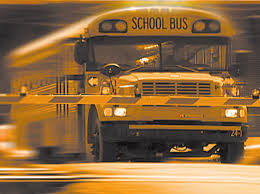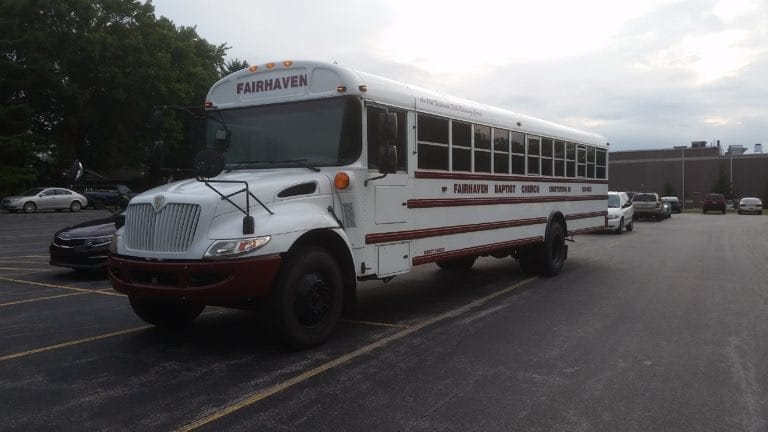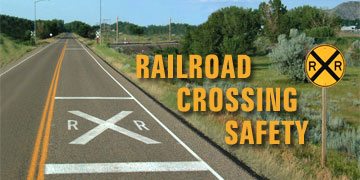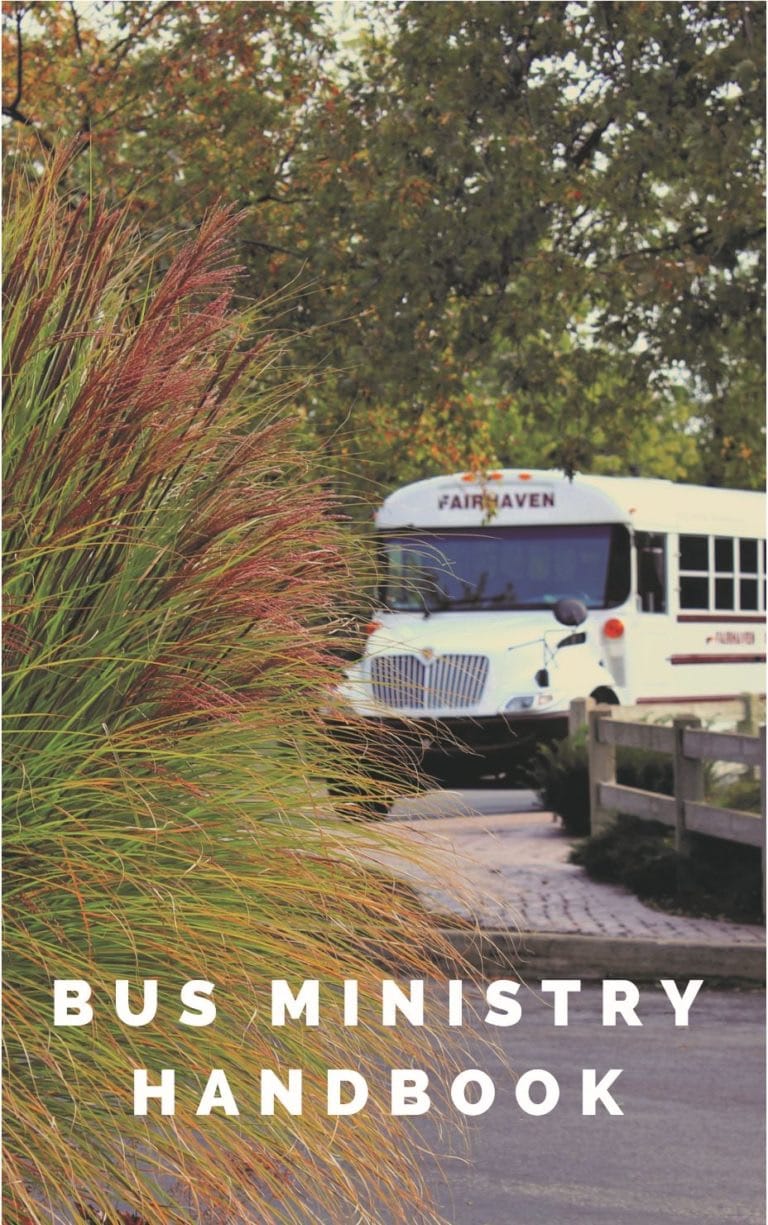Railroad Crossing Procedures
Every state has different laws and regulations for crossing railroad tracks in a school bus. If you have any questions about your state laws or districts policies be sure to bring them up to your supervisor.
In general, school buses must stop at all crossings, with or without passengers, and ensure it is safe before proceeding across the tracks.
Approaching the Crossing
When you are approaching the crossing slow down! It has been recommended to slow the bus even as much as a half mile before the crossing. This is to allow drivers behind the bus to react properly to the slowing bus.
The driver gives an explanation for the correct railroad crossing procedures. He starts by engaging his 4-way hazard lamps approximately 200 feet before reaching the crossing.
As the driver approaches the tracks, he scans the surroundings and checks mirrors for any traffic behind the bus.
The driver then taps the brakes for an additional warning. This alerts traffic that the bus is about to stop.
As the driver reaches the crossing, he pulls the bus up no closer then 15 feet and no further then 50 feet from the nearest rail. The driver then positions himself to get the best view of the track.
At the Crossing
At the crossing the driver turns off the radio or noisy equipment and quiets the bus to listen for an approaching train.
The driver then opens the service door and the driver’s window and takes the time to look and listen for an approaching train. He stays focused and does not rush.
After safely viewing the track and making the judgment that it is safe to proceed, he closes the service door and checks the tracks once more before crossing the track.
Crossing the Track(s)
The driver then crosses the track in the lowest gear and does not change gears while crossing the tracks. This allows the bus to safely clear the tracks and lessens the chance of the bus stalling on the tracks.
DO NOT STOP THE BUS UNTIL COMPLETELY ACROSS THE TRACKS.
After safely crossing the tracks the drivers turns off the 4-way hazards, completing a proper railroad crossing in a school bus.
Storage and Containment Areas
The driver must pay attention to the amount of room needed to safely clear the intersection. This means that the bus, after crossing the intersection, has enough containment or storage area to completely clear the tracks, even if traffic is stopped in front of the bus. Remember the bus is very long and it needs sufficient room to clear the tracks.
As a general rule, you should add 15 feet to the length of your bus to determine an acceptable amount of containment or storage area.
The video gives a demonstration of this procedure at a busy light rail crossing. In the scene, a bus driver waits at the crossing and does not proceed across the crossing until the traffic has cleared.
The bus driver must know the length of his bus and the driver must become proficient at judging distances in an intersection. Remember, if it doesn’t fit, do not commit!




